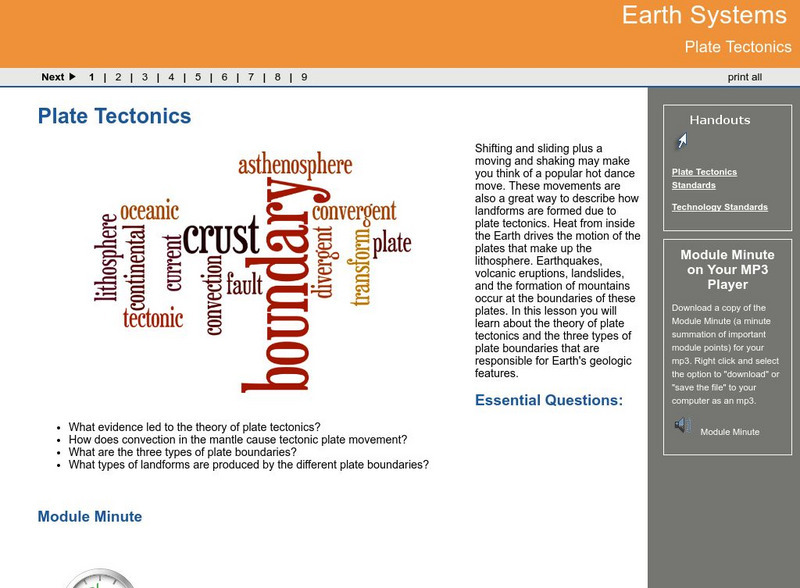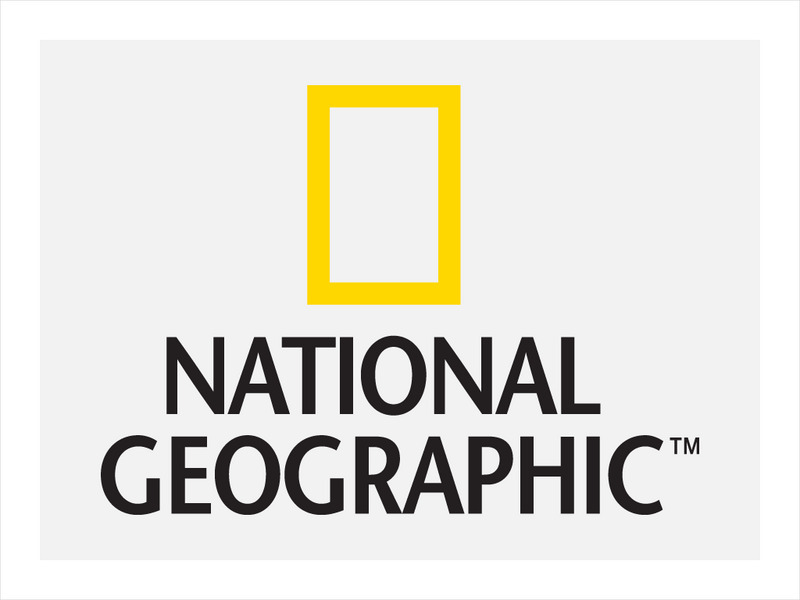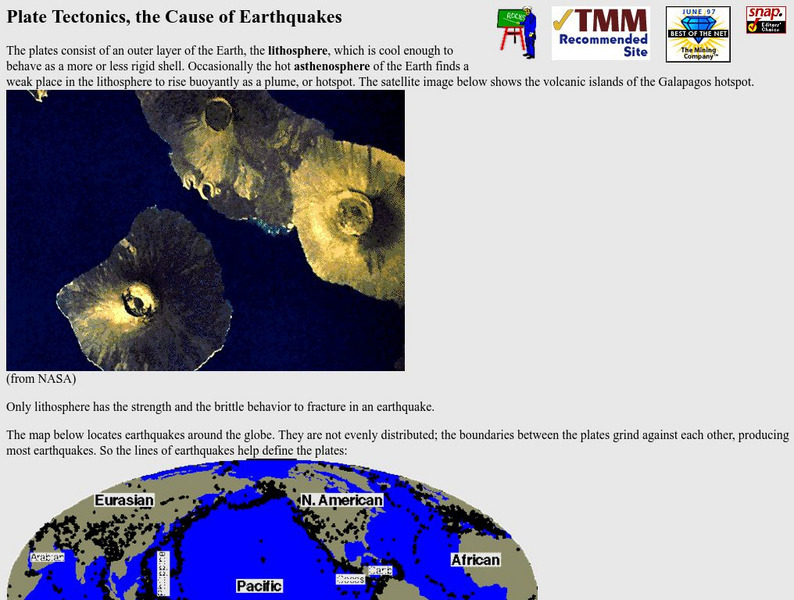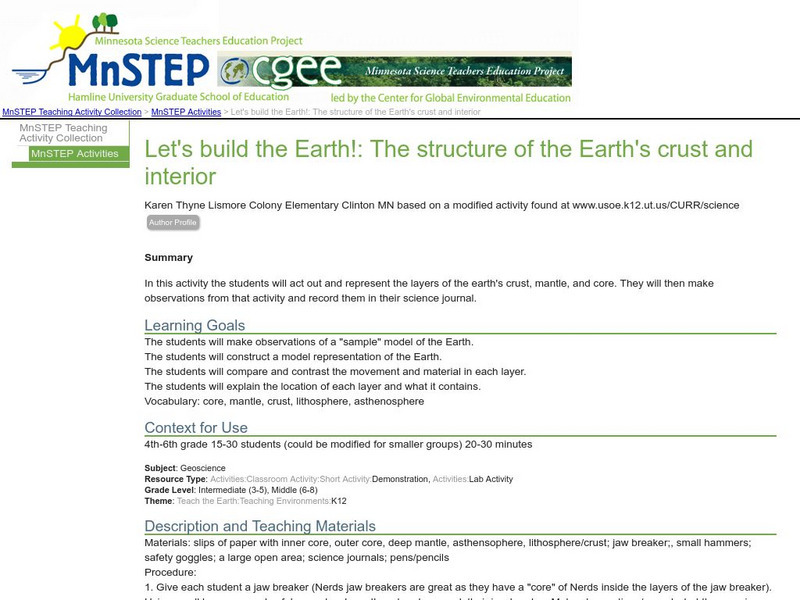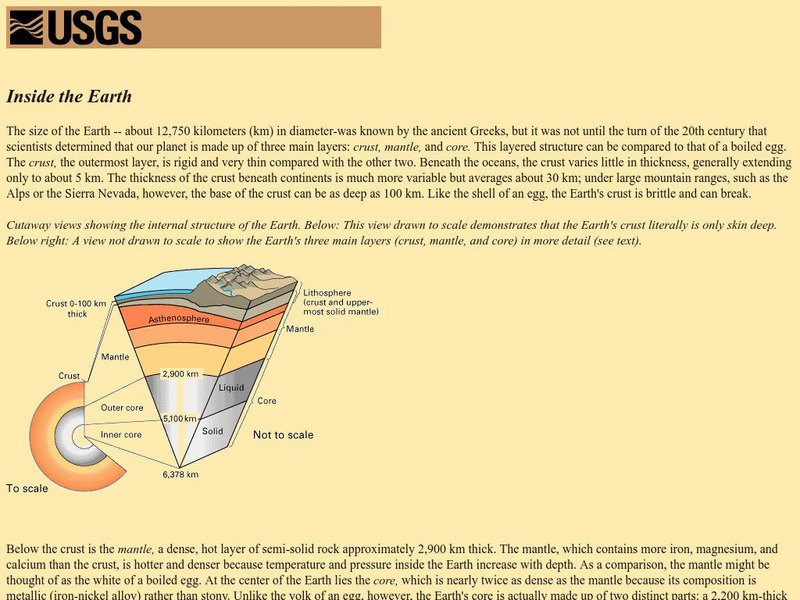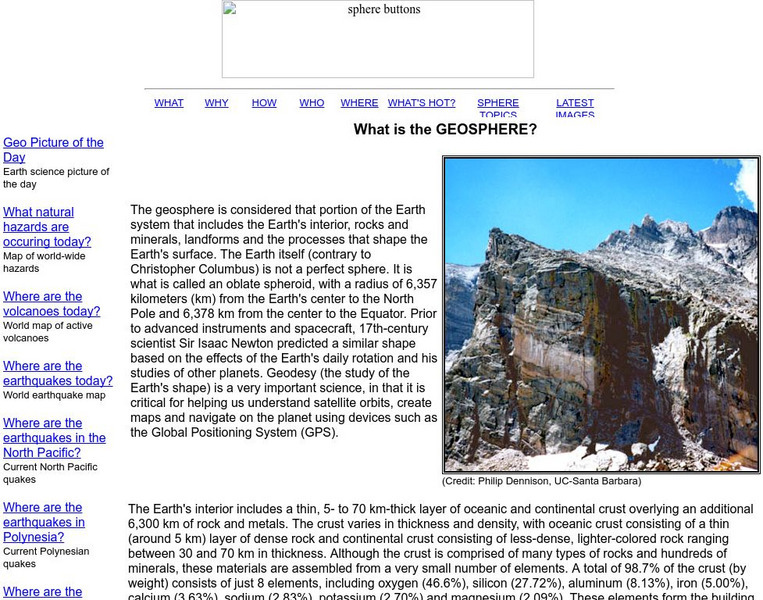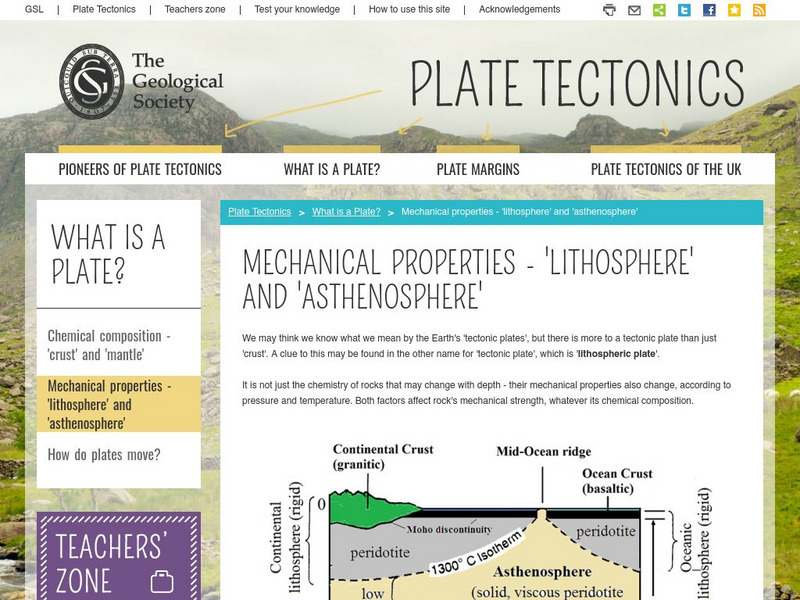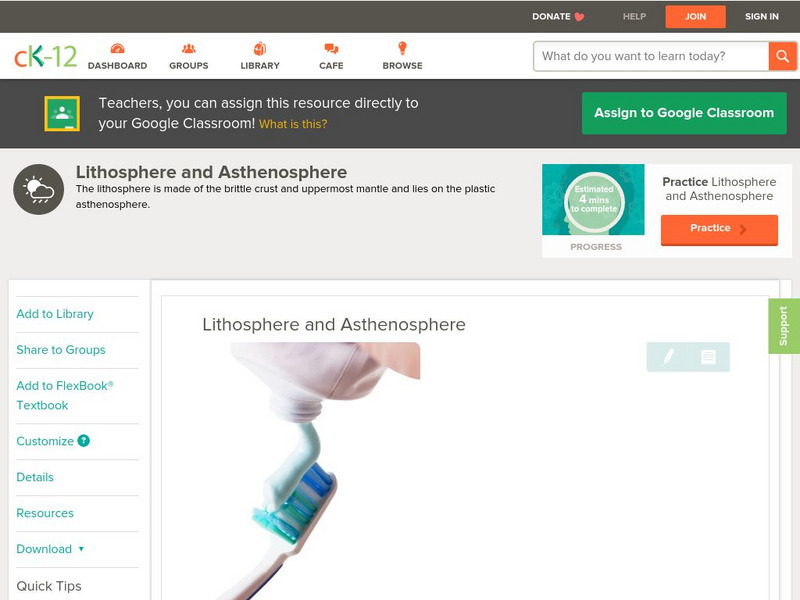Curated OER
The Biggest Plates on Earth
The best part about teaching guides is all the great information you can use to inform your class. They infer what type of boundary exists between two tectonic plates. Then, using given information on earthquakes and volcanism they'll...
Curated OER
Snack Tectonics
Yum! Using graham crackers, dried fruit sheets, and frosting, tectonics technicians demonstrate the different types of plate boundaries. If you want to encourage youngsters with an activity that is both educational and edible, then this...
Curated OER
What's The Difference?
Students identify geologic features that are associated with volcanoes. In this volcanic exploration lesson students compare and contrast convergent and divergent volcanoes and are able to explain why some erupt more explosively.
Curated OER
The World's Spheres Vocabulary
For this world's spheres worksheet, students are given nine spheres and they match the given definitions of the sphere with the term.
Georgia Department of Education
Ga Virtual Learning: Plate Tectonics
In this interactive lesson you will learn about the theory of plate tectonics and the three types of plate boundaries that are responsible for Earth's geologic features.
TeachEngineering
Teach Engineering: How Mountains Are Formed
Middle schoolers investigate how mountains are formed. Concepts include the composition and structure of the Earth's tectonic plates and tectonic plate boundaries, with an emphasis on plate convergence as it relates to mountain...
Oregon State University
Osu: Volcano World: Layers of the Earth
This is a website not only on the mantle but also about all the layers of the earth.
National Geographic
National Geographic: Encyclopedia: Mantle
An in-depth look at the structure and composition of Earth's mantle, with lots of visuals. Covers lithosphere, Mohorovicic discontinuity, asthenosphere, transition zone, lower mantle, the d double-prime region, mantle convection, mantle...
Other
University of Texas Arlington: Isostasy, Gravity, Magnetism, and Internal Heat
An in-depth look at how isostasy works and the processes taking place during glaciation and the melting of glaciers. Looks at gravity and the effects of density differences within the crust and mantle, and at Earth's magnetic field and...
Other
Nevada Seismological Laboratory: Plate Tectonics, the Cause of Earthquakes
This site contains an in-depth explanation of the causes of earthquakes as they relate to plate tectonics, and also has many nice and easy to read pictures, maps, and diagrams of plate tectonics and earthquakes.
Other
Bscs: Content Background Earth's Changing Surface
This is written to support and further your content learning about the dynamic nature of Earth's surface. The goal is for you to develop a conceptual understanding of landforms so that you will be able to more effectively teach...
Science Education Resource Center at Carleton College
Serc: Let's Build the Earth!: The Structure of the Earth's Crust and Interior
In this activity, learners will make observations then construct a "sample" model representation of the Earth's layers. They will compare and contrast the movement and material in each layer explaining the location and what it contains.
Other
Plate Tectonic Theory [Pdf]
Check out this slideshow on Plate Tectonics-The unifying theory for all other theories in the Earth sciences-Has resulted in a more detailed understanding of Earth history-Has enabled geologists to more precisely(and cheaply) discover...
US Geological Survey
Usgs: Inside the Earth
This is a website to learn not only about the inner and outer core, but also about the crust and the mantle of the interior of the earth.
Rice University
Museums Teaching Planet Earth: What Is the Geosphere?
Describes Earth's layers, which make up the geosphere.
Other
The Geological Society: Plate Tectonics: Mechanical Properties: 'Lithosphere' and 'Asthenosphere'
This resource describes how the mechanical properties of the lithosphere and asthenosphere change as the temperature and pressure increase. This can cause rocks to flow and become plastic-like.
Curated OER
National Park Service: What on Earth Is Plate Tectonics?
An easy-to-understand explanation of what plate tectonics is. Contains information about the inner parts of the Earth, the difference between the three types of plates, and numerous maps and illustrations.
CK-12 Foundation
Ck 12: Earth Science: Lithosphere and Asthenosphere
[Free Registration/Login may be required to access all resource tools.] The lithosphere is made of the brittle crust and uppermost mantle and lies on the plastic asthenosphere. Read about the properties of the lithosphere and asthenosphere.
CK-12 Foundation
Ck 12: Earth Science: Earth's Interior Study Guide
This comprehensive study guide covers the main terms and concepts needed for an earth science unit on the earth's interior. Review questions are included at the bottom of the study guide.
Science Struck
Science Struck: Asthenosphere Facts
Discusses the characteristics of the asthenosphere which is in the upper mantle of the Earth's layers.






